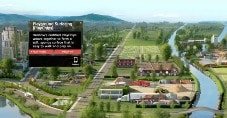Playground Safety Certified
/0 Comments/in Municipal and Infrastructure Journal, Parks, Playgrounds /by Tanya RichardsLandscape Design: A Beautiful Wall
/0 Comments/in Construction Landscape Journal, Landscape, Municipal and Infrastructure Journal, Slope Stabilization, Sustainable Development /by Tanya RichardsGrand Opening: Hazelgrove Park in Surrey
/0 Comments/in Municipal and Infrastructure Journal, Parks, Playgrounds /by Tanya RichardsTBT: Terra Nova Park
/0 Comments/in Landscape Journal, Municipal and Infrastructure Journal, Parks, Playgrounds /by Tanya RichardsMandated Green Roofs in Toronto. Is Vancouver Next?
/0 Comments/in Environment, Green Infrastructure, Sustainable Development /by Tanya RichardsGreen roofs have many benefits. They not only insulate the buildings they shelter but also improve air quality and reduce runoff, easing sewer system loads and preventing associated overflow. They cool in summer, reduce heat loss in winter, and can support birds and other wildlife. Where green roofs top public buildings, they create public green space and parkland. Living roofs can even help cool an entire city in the summer by reducing what’s known as the “urban heat island effect,” where traditional roofing and paving materials increase the overall temperature of the air.
With Toronto’s new Green Roof Mandate, it is well on its way to becoming Canada’s Emerald City. Thanks to a City of Toronto bylaw that requires green roofs on new construction, green roofs will see a dramatic rise in Toronto’s skyline. Residences, commercial and institutional buildings over 2,000 square meters must have a roof that’s 20-60 percent “living.” Green/living roofs are partly or completely covered by vegetation, planted into a growing medium and sitting over a waterproof membrane. They often include structural support, irrigation and drainage systems, and can even incorporate greywater treatment ponds.
With the living roofs, much of the rain fall will now be “absorbed” into the plants and lessen the burden on waste water treatment and storm water volumes. For the city of Toronto, this means that there will be four to five more beach days. That’s good news for everyone. The question for us in City of Vancouver BC is, are we next?
Read the article here.
Victoria PlayChip Installation
/0 Comments/in Municipal and Infrastructure Journal, Parks, Playgrounds /by Tanya RichardsWhy Erosion Control Matters
/0 Comments/in Environment, Erosion Control, Municipal and Infrastructure Journal, Sustainable Development /by Tanya RichardsWhy Sustainable Development Goals Matter
/0 Comments/in Environment, Green Infrastructure, Municipal and Infrastructure Journal, Sustainable Development /by Tanya RichardsWhy Sustainable Development Goals Matter
As our neighbourhoods grow, and our needs as communities increase, development and ingenuity bring solutions to people today. The key to ensuring our solutions are long-term is found in the way we do development.
Why sustainable goals matter is simply, Sustainable Development involves a relationship between nature and humans that demonstrates respect for both. Though we may not always notice it, the natural environment provides a great deal for us, and at times needs some corrective procedures to continue providing for us in the future.
We can see how our relationship to nature is give and take. The Eco-System naturally produces rainfall, provides crops to farm, and protects humans from the elements. At times, for a variety of reasons, this system breaks down and human intervention is needed. Sustainable Development is a balancing act where both parties work together for one common goal, and without it, things begin to fall apart.
Denbow seeks to use innovation to work within this balancing act. Our team specializes in construction, agriculture, landscaping, and municipal/infrastructure, all of which use sustainable development techniques. An example of this is found in Denbow’s newer work in the areas of erosion and sediment control, using forest residuals.
One of the many products Denbow offers is manufactured soil. A mixture of minerals, liquids, organic matter and countless organisms, without healthy soil, the elements would be stripped and the land eventually destroyed. Soil holds everything together, and the right soil for the right project makes all the difference.
At Denbow, we use high quality blended soils that are produced with stringent guidelines for different kinds of use. This mixture of engineered soils can be used for a few specific purposes:
- Vegetable Garden Soil is rich in organic matter. Using this soil in your garden will help you grow the best, healthiest vegetables each season. Growing your own vegetables can give your family the vitamins and minerals our bodies need.
- Specialty Soils are proprietary blended. These are used for such projects as green roofing, structural soil for street tree growth and stormwater management. The structure of these soils are custom made and vigorously tested. Sustainable development projects often require creative measures, and specialty soils provide the perfect opportunity to meet the needs of the specific projects.
- Manufactured Soils are premium blends that contain various levels of compost and sand, designed to benefit trees and shrubs, turf health, and to rejuvenate depleted existing soil. Using these soils can restore existing greenery, or provide an important start for new growth.
Within the variety of soil produced by Denbow, we see how sustainable development starts in our own backyard. Using naturally produced materials, we can benefit from their use as we return them to the earth in our different projects, neither harming human nor the environment.
Denbow Innovations are full of products and services for sustained developments located in the Lower Mainland of British Columbia.
Phone for more information (888) 933.6269
” Delivering Satisfaction for Industrial, Government, Commercial and Residential Use”

